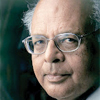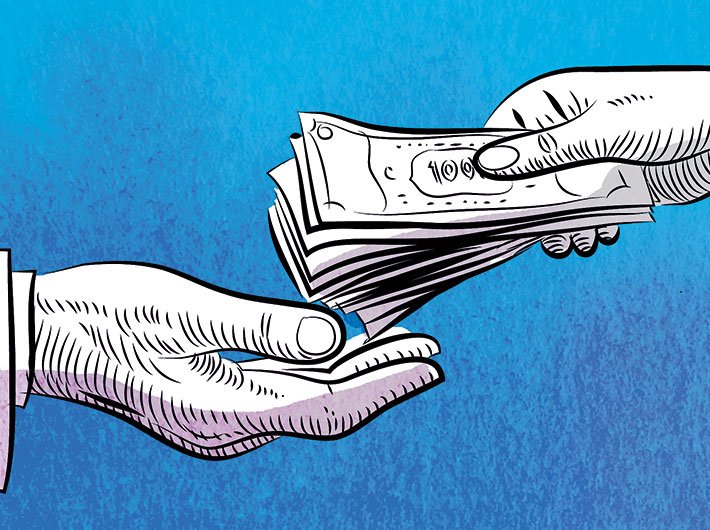Do you want to be recognized by the world as a record-breaker? You can do it: take eight steps: 1. Choose a record. 2. Contact Guinness. 3. Follow the guidelines they send you. 4. Recruit an expert just in case you need adjudication. 5. Collect evidence. 6. Send it to Guinness. 7. Wait. 8. On getting a decision, celebrate – or commit suicide. I should clarify that the last three words of instruction are a joke; I would like to dissociate Guinness from it, and would urge suicidal types to keep away from the Guinness Book of Records.
The more famous Guinness beer was still available in India at the time of independence. Gujaratis would have happily stayed in Bombay province and made merry all the way from Karachi to Karwar. But Marathas wanted Bombay for themselves, so Gujarat had to separate itself on May Day of 1961. Fifty years later, a band played Aage Kadam to a score written by A R Rahman while four thousand five hundred performers danced to commemorate the birth of the state in the Sardar Patel stadium in Ahmedabad. That was not on as large a scale as the event on Christmas Eve of 2010, when 20,000 played in a Golden Chess tournament at the Gujarat University sports ground; but it made a better spectacle. The previous month, Dharinibehn, better known as Dhari Panchamda, sang in Tana Riri music festival held in Vadnagar – yes, the place where Narendra Modi comes from – and did not stop for 101 hours and 23 minutes. Then she began to sing; she sang 214 ragas and 271 bandishes at one go. Six months later, she played santoor non-stop – 29 ragas in three days. Two days after her, Munjal Mehta conducted the world’s first tabla orchestra with 315 players – in Ahmedabad, for course. All these six feats are in the Guinness Book of Records.
Narendra Modi is not far behind; he entered Guinness two years ago. Those of us who are not poor might have had a flat on Prince of Wales Road and gone for an afternoon walk to Hampstead Heath in London. There, in Kentish Town, we might have passed Musion. It would not be a good idea to drop in on them; they insist on your phoning or emailing them first. But they are masters of holographic technology; they are the ones who choreographed the grand event of Michael Kors, the fashion designer, in a 30,000-square-foot hangar at Shanghai airport last year. They are expensive; but the Chinese are rich, and Michael Kors could pay for their services from the orders he picked up from the Chinese.
Musion managed the technology in Narendra Modi’s Gujarat election of 2012, together with their local partners, enchant3D. Indian elections are huge; the electorate of 80 crore is spread over 1.2 million square miles. How is a single leader to cover it? A broad chest is not enough; there has to be a broadcast. Musion built a special studio for Modi; speeches were recorded there, and broadcast simultaneously to a number of stages separated by hundreds of miles – the maximum being 53. Sonia Gandhi ran up and down India giving speeches; but whatever she did, her outreach could not even come close to Modi’s. The 3D interaction between Modi and his audiences was the first thing to figure in Guinness.
After he left Gujarat, Modi has not ceased to reach for the sky. When he became prime minister last May, he set a target of 7½ crore bank accounts for the poor by Republic Day; later he raised it to 10 crore. That is nothing new; politicians have been sold on bank accounts for the poor ever since Indira Gandhi nationalized banks in 1969. How to appropriate credit for a programme that has gone on for 45 years? Rebrand it. That is how Bank Accounts for the Poor became Pradhan Mantri Jan-Dhan Yojana. Thousands of “business correspondents” scattered across the country with printed forms, and entered the names, fathers’ or husbands’ names, dates of birth and so on of everyone they could get hold of; in the week of 23-29 August 2014, they enrolled a crore and eighty lac certified poor into the Yojana. That was something; Guinness not only recognized the record, but came to Delhi, sought out Arun Jaitley, and gave him a certificate.
Prime ministers could not be more different than Indira Gandhi and Narendra Modi; but both went crazy about bank accounts for the poor. Why? One reason for preferring bank over cash transactions is that bank accounts make it more difficult to cheat on taxes. But that cannot be the reason for pressing the poor to open bank accounts; they are not great income tax payers. The reason may be that politicians want banks to fund businesses run by the poor; then there will be fewer poor, and they will need less help from the government.
But running a business and making a profit is not easy; the poor may well borrow from banks, blow up the money and stay poor. That is what the bankers fear; that is why they have been reluctant to go anywhere near the poor, and have had to be whipped by politicians to open accounts for the poor. Why are the politicians so keen on accounts for the poor? One reason is that they want to shower gifts on the poor, and that they think the gifts are less likely to be stolen en route if they are monetized and delivered in the bank accounts of the poor. Is it any more difficult to open an account in the name of a fictitious poor woman and steal the money? No, but it would leave a trail: someone may some day find out that it was stolen, and then pursue the bank clerk and his spurious beneficiary.
There was a time, not too long ago, when politicians thought differently: they thought that if they made getting a government subsidy unpleasant enough, only the poor would bother to take it. That is how the Great and Holy Mahatma Gandhi National Rural Employment Guarantee scheme was conceived of: only poor people would go out in the hot sun and break stones all day to get a hundred Rupees a day. Only the poor would go and wait for hours for absent doctors and nurses to turn up. Worsen the quality of service enough for all but the poor to lose interest in it. The politicians were only too right: their public servants reduced the quality of service so much that no poor turned up, and they could fake the names of the poor and appropriate the entire funds. They conspired with ration shopkeepers to sell PDS grains in the market, get the subsidy on them from the government by showing them as having been sold the poor, and share it with the shopkeepers. After thousands of crores had been earned in bribes, the politicians saw sense. That is when they gave up on subsidies in kind to jobs that brought no one profit, and plumped for subsidies in cash. As I pointed out, cash subsidies are just as easy to misappropriate; but it is unprofitable to discover that, so politicians will not be in a hurry to realize this.
Suppose that politicians were to abandon populism and opportunism; are there better ways of helping the poor? I think of my friend P V Sukhatme, who was an agricultural economist. After he retired from Food and Agriculture Organization, he settled down in his native Poona, employed as cooks women who had no one to support them, set up street stalls, and sold balanced, nutritious food at a Rupee a thali. He died; Shiv Sena continues to sell Zhunkha Bhakhar on his model, but only in its strongholds to its own supporters. Sikhs routinely feed anyone who comes to a Gurdwara; the government should persuade them to feed all the poor, all over the country, at its own cost. I have myself often said that the government should give chiki – a combination of gur and chana or peanuts – a liberal subsidy; it is excellent balanced food for anyone, rich or poor.
Poverty is not a curse; most Indians are poor, and they are amongst the happiest people in the world. But poor people are often visited by distress and crisis – death of breadwinner, prolonged illness, mental stress, and so on. It is these occasional disasters that people need resources to cope with. They will have some if they save, which they may do with Jan Dhan; but they will also get it more reliably if they live in communities where friends meet them often and recognize their circumstances. Communities still survive – for instance, amongst tribes, or amongst schoolchildren. Can we extend their model to the whole society? That is the question to we should look for an answer. And that community should be Hamara Hindustan, not Hindutwit Bharat.
(The article appears in the June 1-15, 2015 issue)

